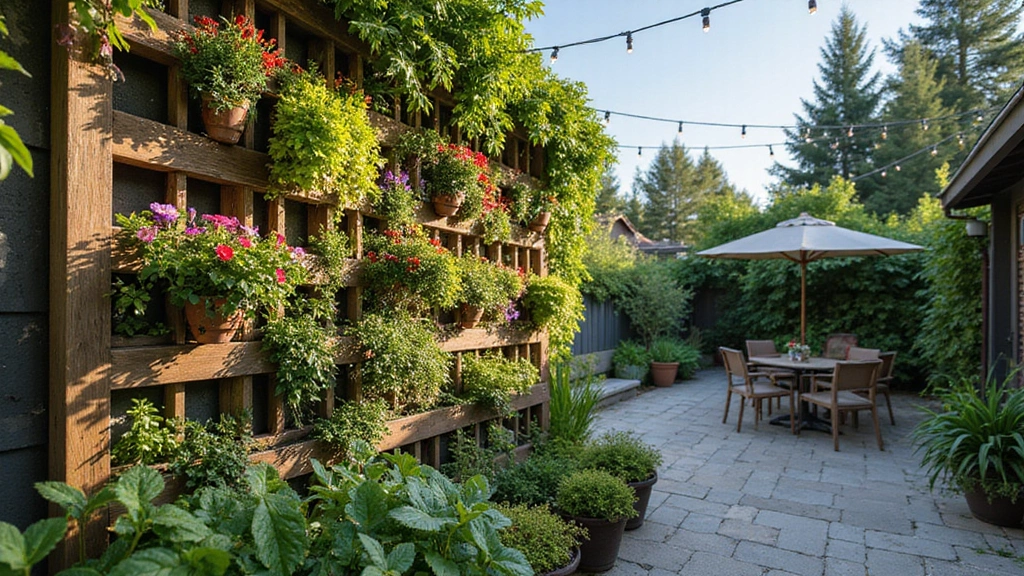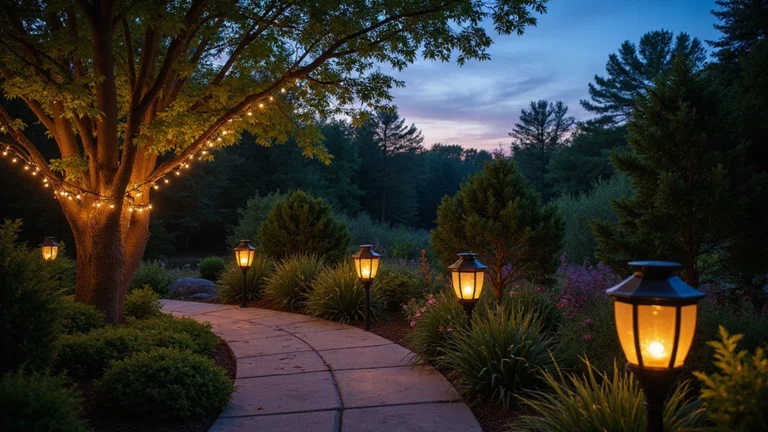27 Small Garden Ideas for Vertical Garden Solutions
Are you dreaming of a lush garden but limited by space?
Transform your small outdoor area into a stunning vertical garden oasis with our curated list of 27 creative ideas.
From colorful wall planters to enchanting hanging gardens, these solutions will not only beautify your space but also serve as unique outdoor decor.
Let’s dive into the world of small space gardening and explore how vertical gardens can revolutionize your home’s landscape design!
1. Wall-Mounted Planter Boxes
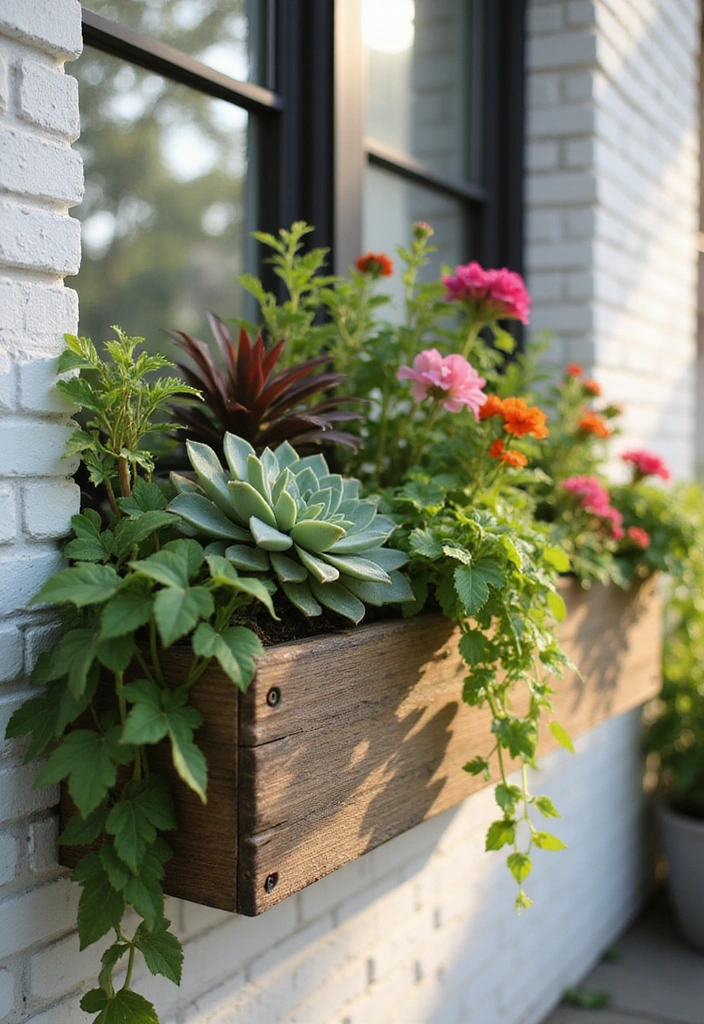
Wall-mounted planter boxes are a fantastic way to infuse life into bare walls.
These boxes can be arranged in various patterns to create a stunning visual effect, allowing you to showcase a variety of plants, from vibrant flowers to aromatic herbs.
They’re perfect for small spaces as they utilize vertical height, leaving your floor space free.
When choosing planter boxes, consider materials like wood or metal that complement your outdoor decor.
Tips:
– Ensure proper drainage to keep plants healthy.
– Mix different types of plants for a dynamic look.
– Incorporate trailing plants for added depth.
Issues to Consider:
– Weight of the boxes when filled with soil.
– Sunlight exposure for each plant type.
Unique Insights:
– Use self-watering planter boxes to minimize maintenance.
– Personalize them with paint or stencils to match your style.
2. Vertical Herb Garden
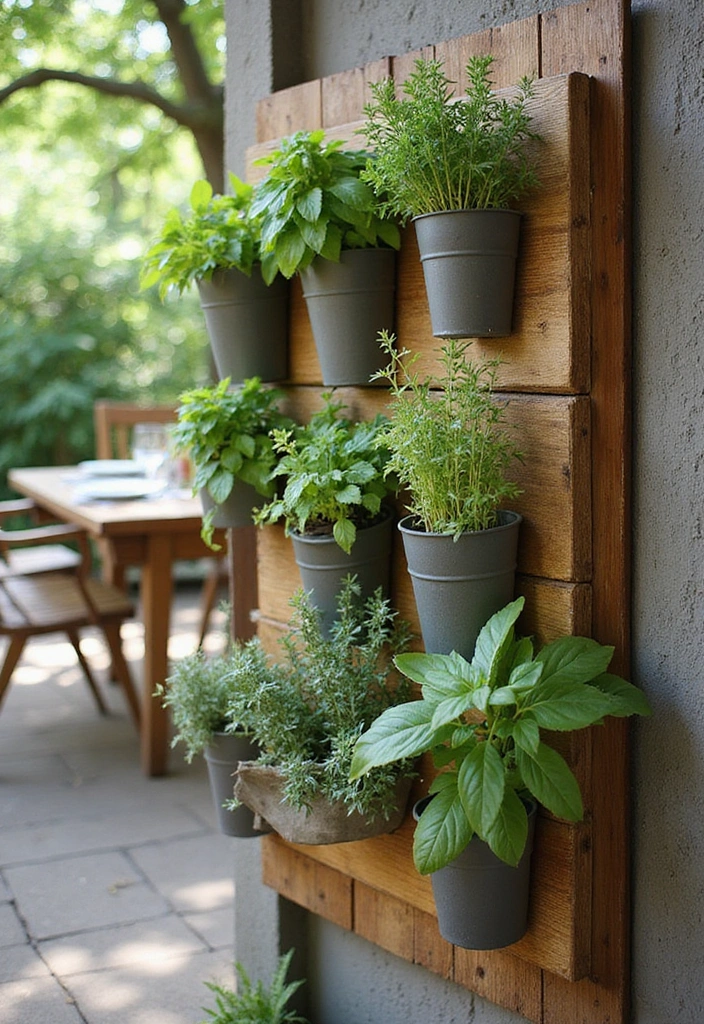
Imagine having fresh herbs at your fingertips, beautifully displayed in a vertical herb garden!
These gardens not only provide fresh ingredients for cooking but also add a delightful green touch to your outdoor decor.
You can create a simple structure using pallets or repurpose an old ladder.
Tips:
– Choose herbs that thrive in your climate, such as basil, mint, and rosemary.
– Use labeled pots for easy identification.
– Position the garden where it gets ample sunlight.
Issues to Consider:
– Watering needs vary per herb; research each plant’s requirements.
– Ensure the structure is sturdy enough to hold the pots.
Unique Insights:
– Consider planting herbs that repel pests to keep your garden healthy.
– An herb garden can also serve as a natural air freshener.
3. Hanging Gardens
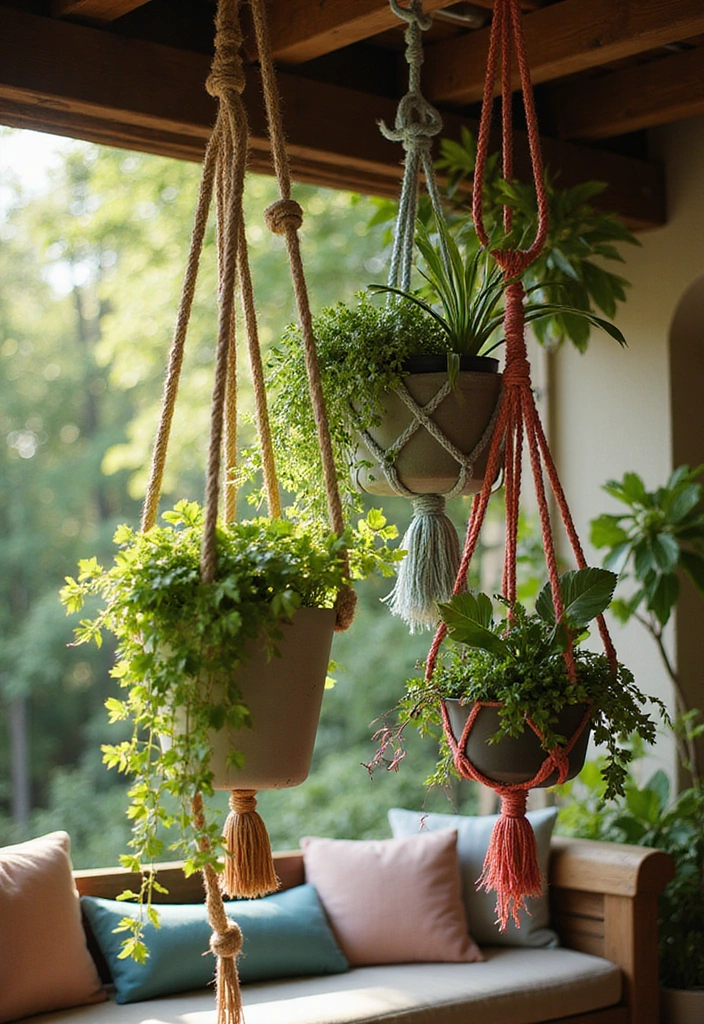
Hanging gardens are a delightful way to add a touch of whimsy to your outdoor space.
By suspending plants from ceilings or walls, you create a floating garden that draws the eye upwards and provides a unique perspective.
Use simple macramé hangers or decorative baskets to showcase trailing plants like ferns and petunias.
Tips:
– Mix different heights and types of plants for visual interest.
– Make sure to select lightweight containers that won’t damage your hangings.
– Consider using LED grow lights if sunlight is limited.
Issues to Consider:
– Ensure proper drainage to avoid water damage.
– Check that hangers are secure and can support the weight of the plants.
Unique Insights:
– Hanging gardens can also be used indoors, creating a refreshing atmosphere in any room.
– Pair them with fairy lights for a magical evening glow.
4. Pallet Planters
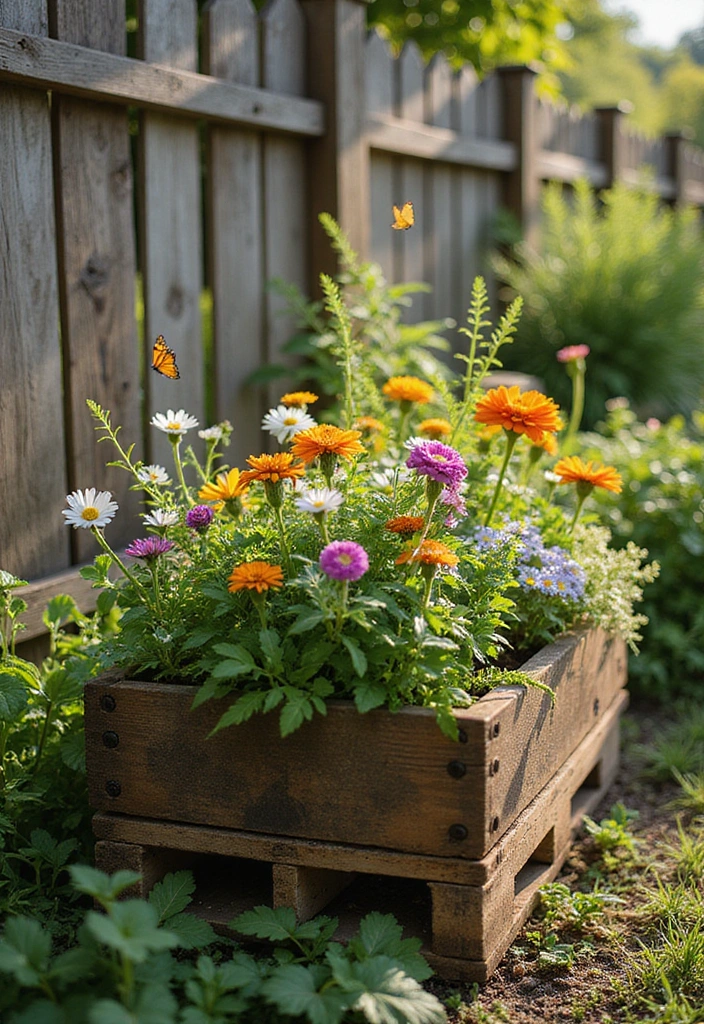
Turn an old pallet into a stunning planter that utilizes vertical space!
Pallet planters are great for growing a variety of plants, from flowers to vegetables, in a compact format.
These can be placed against a wall or even as a freestanding feature in your garden.
Tips:
– Line the pallet with landscaping fabric to prevent soil loss.
– Choose plants that have similar water and sunlight needs.
– Paint the pallet for an added splash of color.
Issues to Consider:
– Pallets should be heat-treated to avoid chemicals.
– Ensure it’s positioned in a spot that receives adequate sunlight.
Unique Insights:
– Create a themed pallet planter, such as a rainbow of flowers or a culinary herb garden.
– Use it as a vertical display for seasonal decorations.
5. Vertical Trellises
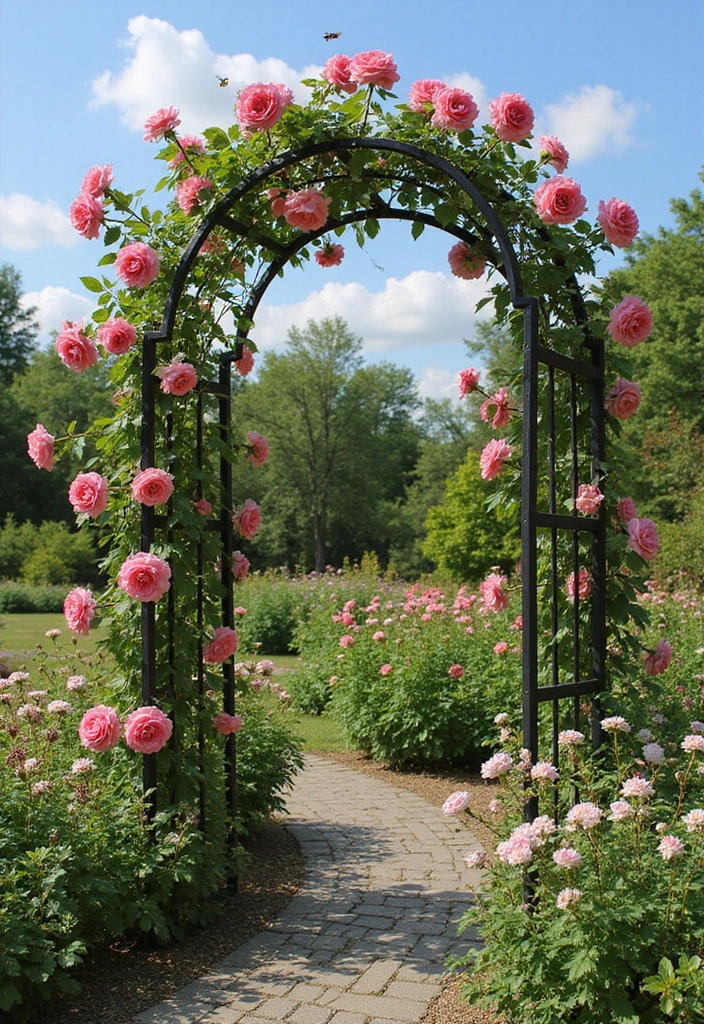
Vertical trellises are perfect for climbing plants and can become a stunning focal point in your small garden.
Use them to support climbing roses, beans, or even cucumbers, adding height and visual interest to your landscape design.
They can be made from wood, metal, or even repurposed materials.
Tips:
– Position the trellis in a spot that gets enough sunlight for the plants.
– Train the plants as they grow to follow the trellis structure.
– Choose decorative trellises that complement your outdoor decor.
Issues to Consider:
– Ensure the trellis is securely anchored to withstand strong winds.
– Monitor the growth to prevent overcrowding.
Unique Insights:
– Combine trellises with hanging pots for a layered effect.
– Use trellises as a privacy screen or to block unsightly views.
6. Window Box Gardens
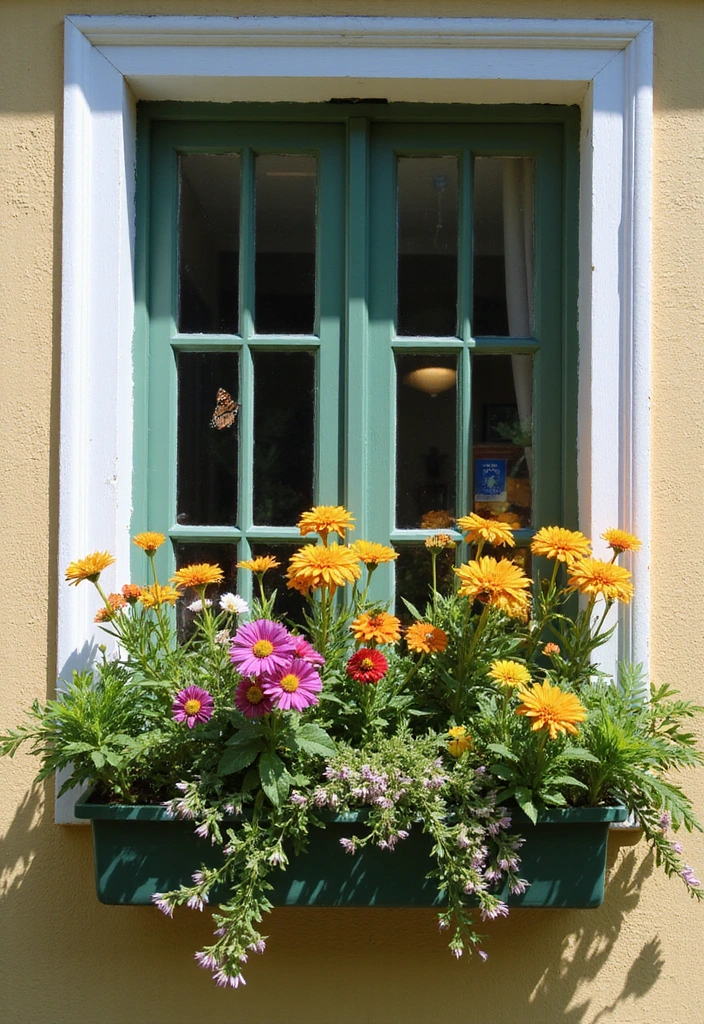
Window boxes are an elegant way to bring greenery to your home while maximizing limited space.
These boxes can be filled with colorful flowers, herbs, or even small vegetables, adding charm to any window sill.
They can be mounted on the outside of your home, instantly boosting your curb appeal.
Tips:
– Choose plants that thrive in your local climate and light conditions.
– Water regularly, as window boxes can dry out quickly.
– Consider using self-watering window boxes for convenience.
Issues to Consider:
– Ensure proper drainage to prevent root rot.
– Check for local regulations regarding window box installations.
Unique Insights:
– Use window boxes to create seasonal displays, swapping out plants for holidays or seasons.
– Incorporate trailing plants for a cascading effect.
7. Vertical Succulent Gardens
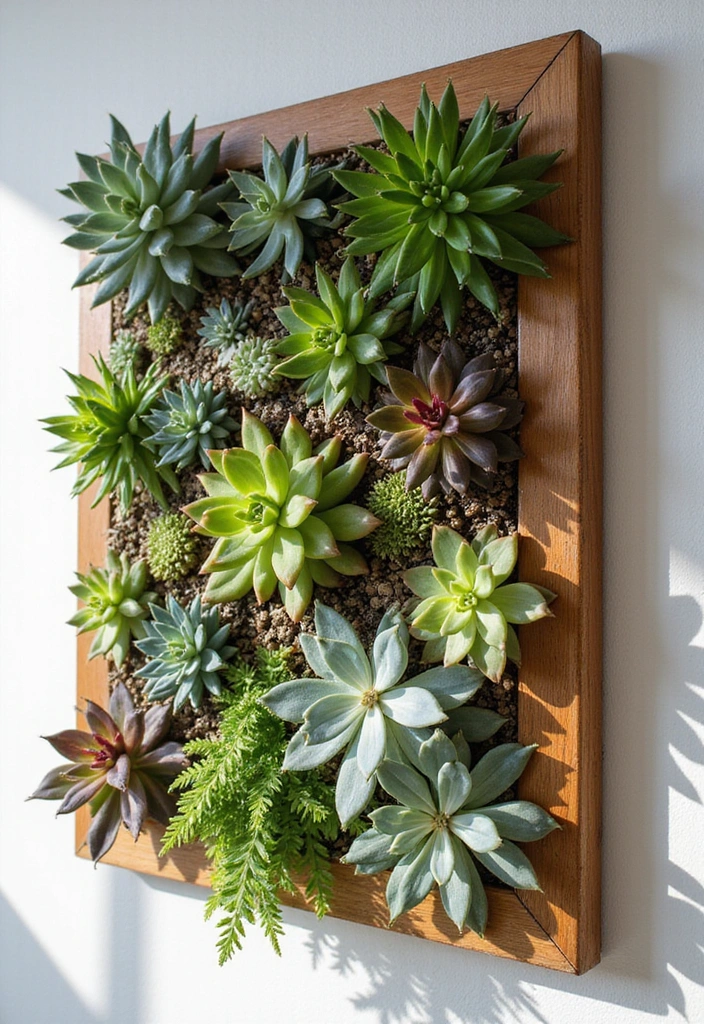
Succulents are low-maintenance plants that flourish in vertical gardens, making them perfect for busy gardeners!
These hardy plants come in various shapes and colors, allowing for artistic arrangements that can brighten any space.
You can create a living wall or use vertical planters to display them in a unique way.
Tips:
– Ensure each plant receives enough sunlight by spacing them appropriately.
– Use a soil mix designed for succulents to prevent rot.
– Incorporate decorative stones for added visual interest.
Issues to Consider:
– Monitor for overwatering; succulents prefer dry conditions.
– Make sure the vertical structure is sturdy enough for the plants.
Unique Insights:
– Succulent gardens can also be themed, like a desert landscape or a rainbow of colors.
– Incorporating driftwood or decorative frames can enhance the aesthetic.
8. Vertical Vegetable Gardens
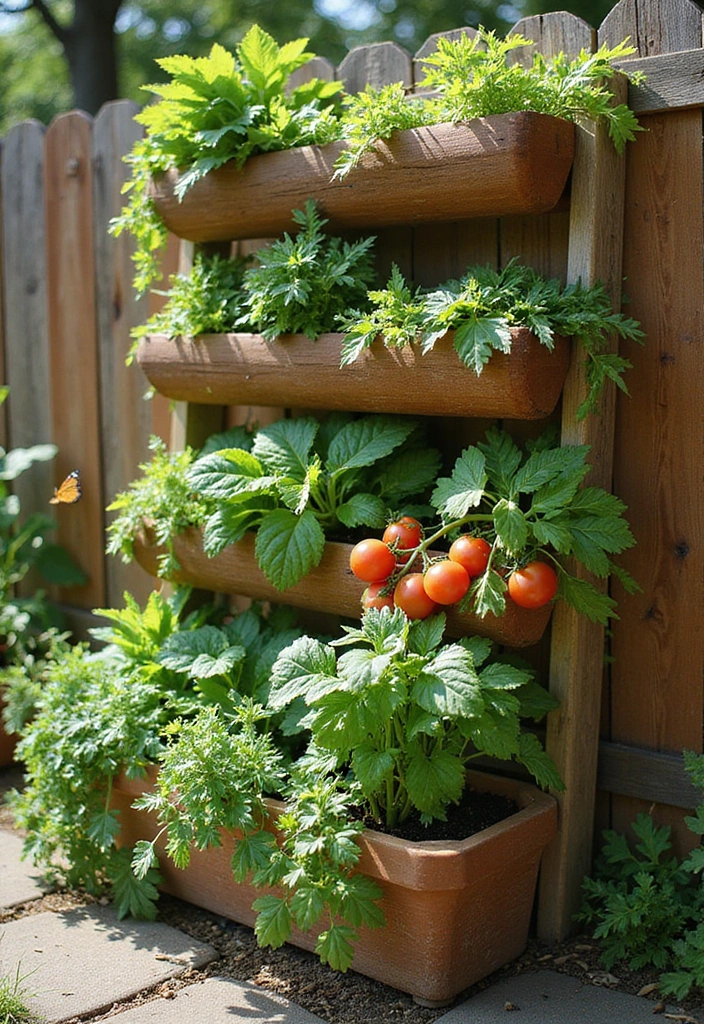
Who says you can’t grow vegetables in a small space? Vertical vegetable gardens allow you to maximize your yield while minimizing your footprint.
Use stacked planters, hanging baskets, or even repurposed shoe organizers to grow your favorite veggies.
This method keeps plants off the ground, reducing pests and making harvesting easier.
Tips:
– Choose compact varieties of vegetables like cherry tomatoes and lettuce.
– Ensure adequate sunlight and water for optimal growth.
– Rotate plants seasonally for diversity.
Issues to Consider:
– Check for adequate support for heavier plants.
– Be mindful of plant spacing to allow for growth.
Unique Insights:
– Incorporate companion planting to enhance growth and deter pests.
– Vertical gardens can be part of a larger landscaping theme, incorporating ornamental elements.
9. Living Walls
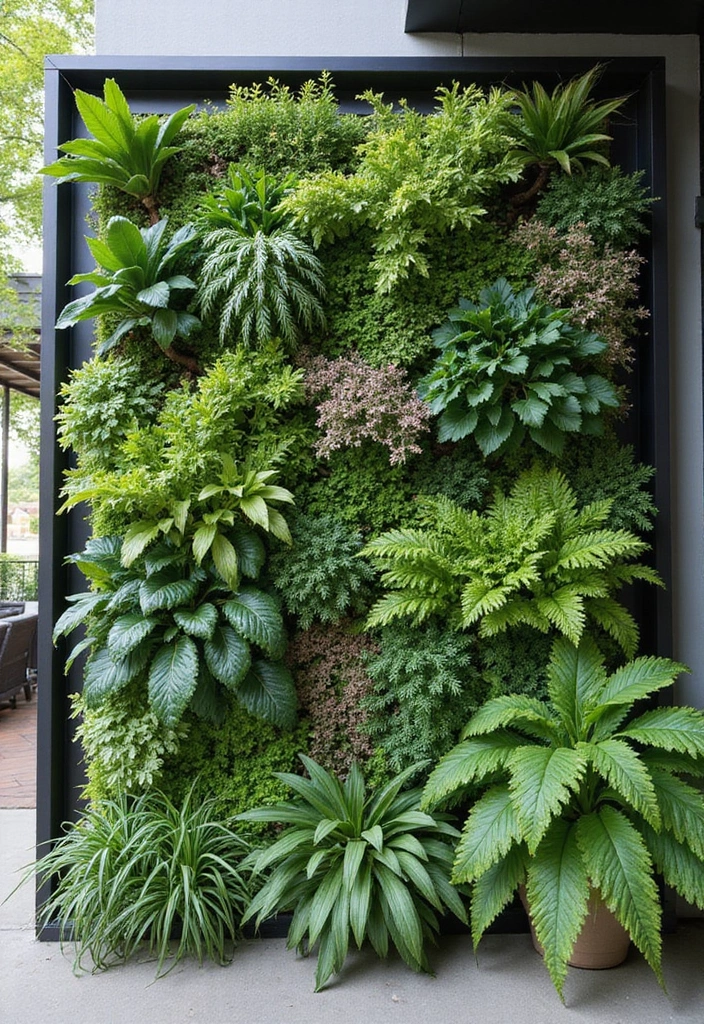
Living walls, or green walls, are breathtaking installations that not only beautify but also purify the air.
These vertical gardens can be designed with a variety of plants, including flowers, ferns, and even edible plants, creating a lush, living tapestry.
They can act as natural sound barriers and insulators, making them perfect for urban settings.
Tips:
– Use a modular planting system for easy maintenance and replacement.
– Ensure proper irrigation and drainage to keep plants healthy.
– Choose a mix of textures and colors for visual interest.
Issues to Consider:
– Installation can be complex; consider hiring a professional.
– Monitor for pests and diseases more frequently in dense plantings.
Unique Insights:
– Living walls can be both indoor and outdoor features, enhancing any space.
– Use plants that are known for air purification to maximize benefits.
10. DIY Vertical Garden Kits

DIY vertical garden kits are an exciting way to create your own green space without the hassle of starting from scratch.
These kits often come with pre-planned layouts, soil, and plant selections, making it easy for anyone to jump into gardening.
They can be customized to fit your specific space and style, from herbs to flowers.
Tips:
– Follow the instructions carefully for the best results.
– Choose a kit that suits your gardening skill level.
– Personalize your garden with your favorite plants.
Issues to Consider:
– Ensure the kit includes everything you need for setup.
– Research the plants in the kit to ensure they suit your climate.
Unique Insights:
– Group kits together for a layered effect and added visual interest.
– Use them as gifts for gardening enthusiasts.
11. Greenhouse Shelves
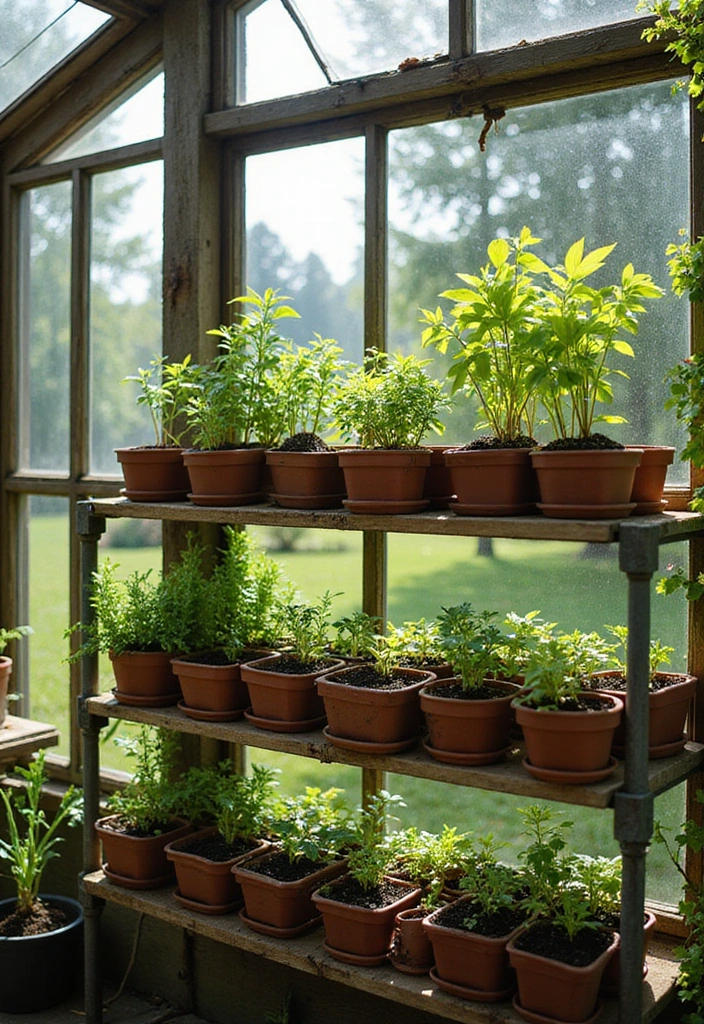
Greenhouse shelves allow for the perfect blend of vertical gardening and controlled environments.
These shelves can hold pots of various sizes and heights, perfect for starting seedlings or growing plants that require specific conditions.
They can be placed in a sunny corner of your garden or even inside for year-round gardening.
Tips:
– Choose shelves that are adjustable to accommodate different plant sizes.
– Ensure proper airflow to prevent mold and pests.
– Use trays under pots to catch excess water.
Issues to Consider:
– Ensure stability if using taller shelves.
– Monitor temperature and humidity levels regularly.
Unique Insights:
– Use greenhouse shelves as a display for ornamental plants.
– Incorporate lighting for indoor gardening during winter months.
12. Recycled Container Gardens

Get creative with recycled container gardens!
Use old buckets, cans, or even wooden crates to create unique planters that showcase your sustainable gardening style.
These containers add character to your garden while being eco-friendly.
Tips:
– Make sure containers have drainage holes for healthy plants.
– Use spray paint to customize the look of your containers.
– Combine plants of different heights for a dynamic display.
Issues to Consider:
– Check that recycled materials are safe for plants.
– Be mindful of the size of the container concerning the plant’s growth.
Unique Insights:
– Incorporate themed recycled containers for a fun garden project.
– Host a container garden party with friends to share ideas and creations.
13. Staircase Gardens
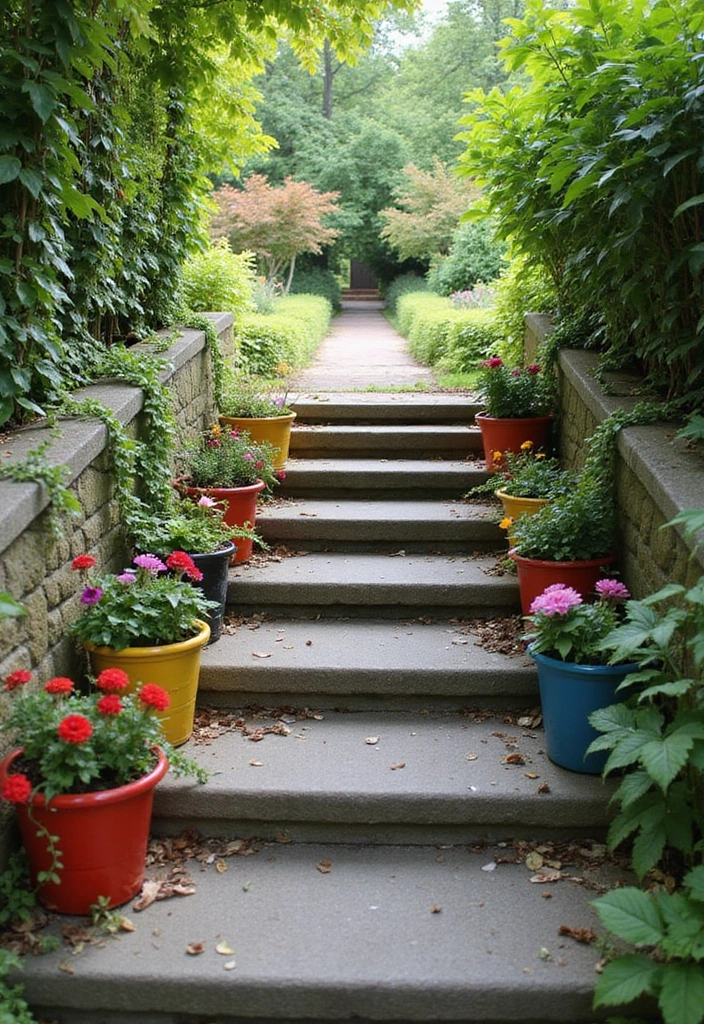
Staircase gardens are a clever way to utilize often-overlooked spaces.
Turn stairways into vertical gardens by adding planters on each step or along the railing, creating a cascading effect of greenery.
This idea not only maximizes space but also adds a unique touch to your outdoor decor.
Tips:
– Choose plants that thrive in partial shade if your staircase is covered.
– Use lightweight containers to make it easy to rearrange.
– Incorporate seasonal plants for a changing landscape.
Issues to Consider:
– Ensure the plants are secured to avoid accidents.
– Monitor watering closely as plants may dry out quickly in containers.
Unique Insights:
– Staircase gardens can be themed based on colors or types of plants.
– Use trailing plants to create a stunning visual cascade.
14. Balcony Vertical Gardens
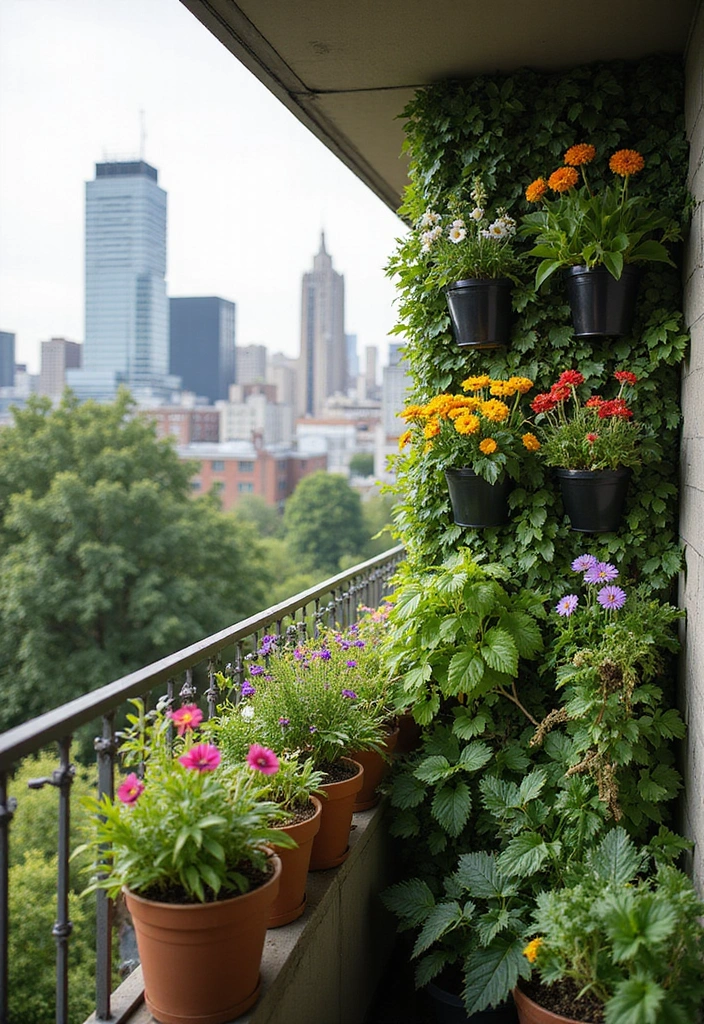
Make the most of your balcony space with a vertical garden that transforms it into a green oasis.
Utilize railing planters, wall-mounted pots, or vertical garden panels to create a lush backdrop for relaxation.
These gardens not only beautify your space but also provide privacy and reduce noise.
Tips:
– Choose plants that thrive in your balcony’s light conditions.
– Ensure pots have adequate drainage and sunlight.
– Use vertical space wisely by layering plants.
Issues to Consider:
– Check for local regulations regarding balcony gardening.
– Be cautious of wind exposure; secure plants as needed.
Unique Insights:
– Incorporate edible plants for a functional garden.
– Use colorful planters to enhance your outdoor decor.
15. Quilted Planters
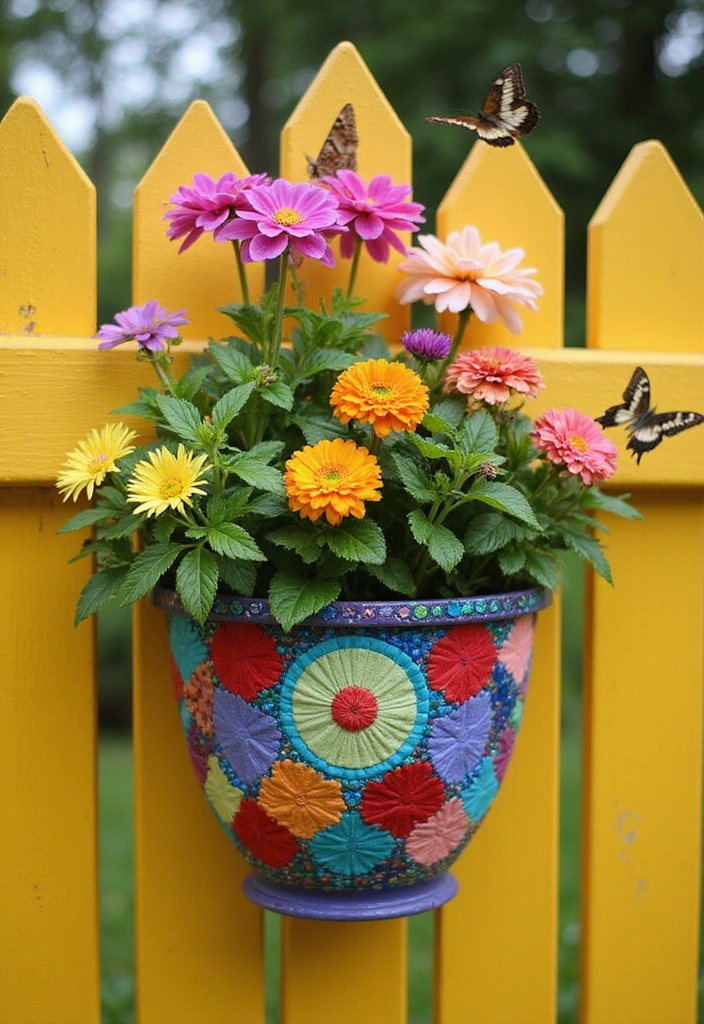
Quilted planters are an innovative and stylish way to grow plants vertically.
These soft-sided planters can be hung on walls or fences, allowing for a unique display of flowers and herbs.
They are great for small spaces and can be easily moved around as needed.
Tips:
– Choose plants with shallow root systems for optimal growth.
– Water carefully to avoid over-saturation.
– Mix colors and textures for visual appeal.
Issues to Consider:
– Ensure they are securely fastened to prevent falling.
– Monitor for pests that may thrive in fabric.
Unique Insights:
– Quilted planters can also be used indoors to create a vibrant indoor garden.
– They can be a fun DIY project to personalize your garden space.
16. Vertical Fencing Gardens
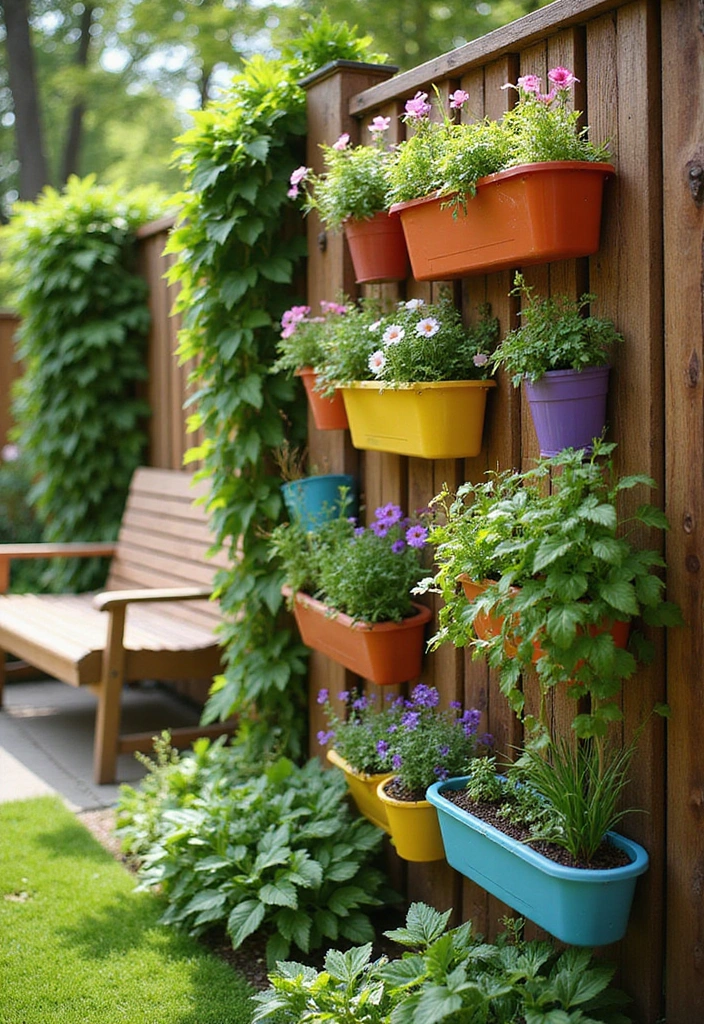
Transform your garden fence into a vertical garden with planting pockets or wall-mounted planters.
This idea not only beautifies your fence but also maximizes your planting area without taking up valuable ground space.
Choose flowers, herbs, or even small vegetables to create a vibrant and functional garden.
Tips:
– Ensure the fence is sturdy enough to hold the weight of the planters.
– Space plants appropriately for optimal growth.
– Use plants that thrive in your local climate.
Issues to Consider:
– Monitor for pests that may target plants on your fence.
– Ensure proper drainage to prevent water damage to the fence.
Unique Insights:
– Use colorful planters to add a pop of color to a dull fence.
– Incorporate lights to enhance the beauty of your fence garden at night.
17. Ladder Gardens
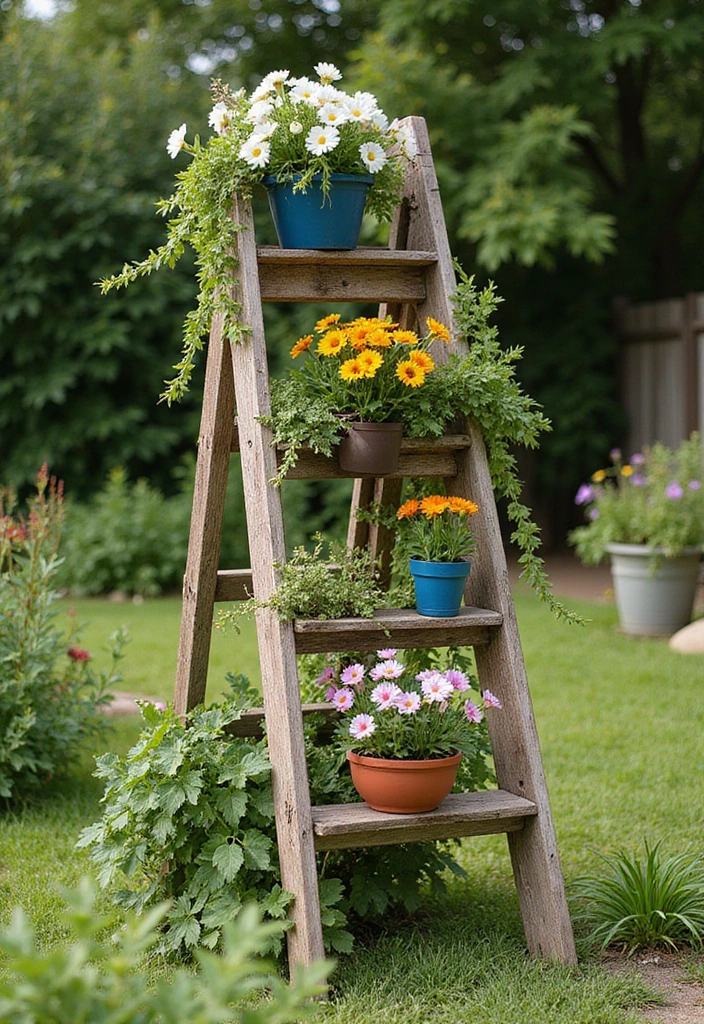
Repurpose an old ladder into a whimsical vertical garden!
Ladder gardens are not only functional but also serve as a unique decorative element in your outdoor space.
Simply attach pots to the rungs or use the steps to hold plants, creating a charming display.
Tips:
– Use different sizes of pots for added visual interest.
– Paint or decorate the ladder to match your garden style.
– Secure the ladder to prevent it from tipping.
Issues to Consider:
– Ensure the ladder is sturdy enough to hold the weight of the plants.
– Monitor the plants for sunlight and watering needs.
Unique Insights:
– Ladder gardens can be themed with seasonal plants.
– Use them to display plants that trail for added drama.
18. Tree Stump Planters
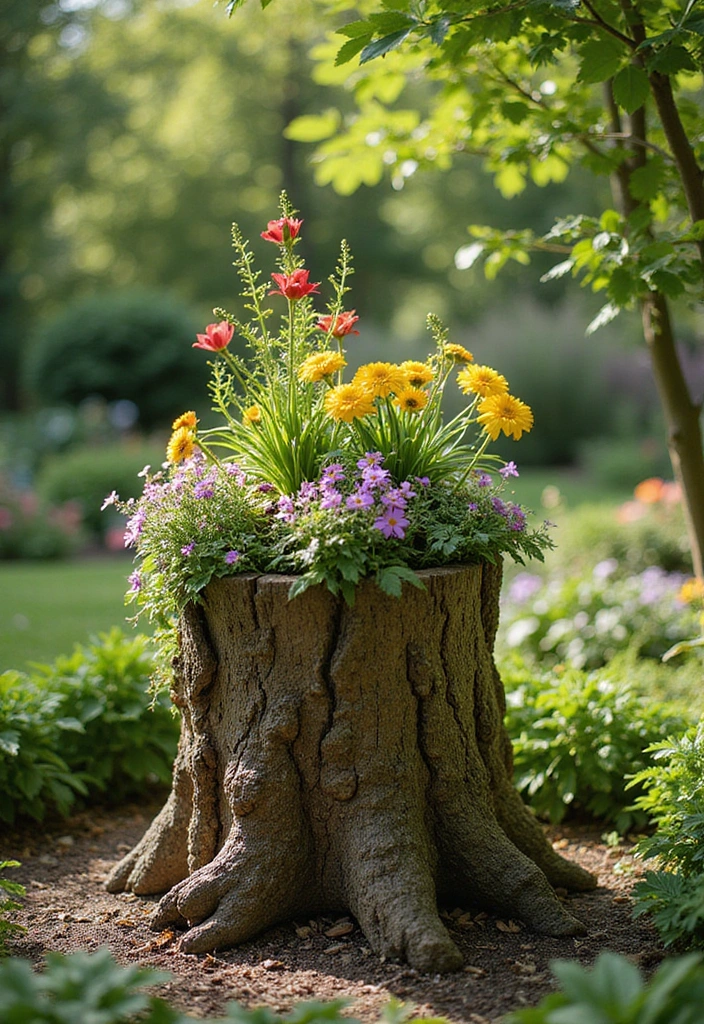
Turn an old tree stump into a creative planter for a rustic touch to your garden.
Tree stump planters can be filled with flowers, succulents, or herbs, adding character and charm to your outdoor space.
They make great conversation pieces and establish a link to nature.
Tips:
– Hollow out the center of the stump for planting.
– Use a variety of plants to create a layered effect.
– Surround the stump with decorative stones or mulch for added appeal.
Issues to Consider:
– Ensure the stump is free of rot before planting.
– Monitor moisture levels, as stumps can retain water.
Unique Insights:
– Incorporate fairy lights around the stump for a magical touch at night.
– Create a mini ecosystem by pairing plants with different needs.
19. Colorful Pot Displays

Create a lively atmosphere with colorful pot displays in your vertical garden.
Stack or arrange pots in varying heights to create visual interest and a cheerful vibe.
Mix and match colors and textures to reflect your personal style.
Tips:
– Choose plants that complement each other in color and height.
– Use pots of different sizes to create layers.
– Incorporate decorative elements like stones or sculptures.
Issues to Consider:
– Ensure pots are lightweight and easy to move.
– Monitor plant health as they may compete for light.
Unique Insights:
– Use this display to showcase seasonal plants for a fresh look.
– Incorporate personal items like heirlooms for added charm.
20. Vertical Shade Gardens

Transform shady areas of your garden with a vertical shade garden!
Utilizing vertical space allows you to grow shade-loving plants without sacrificing ground space.
Consider ferns, hostas, and other shade-tolerant plants to create a lush green wall.
Tips:
– Choose plants that thrive in low-light conditions.
– Use a variety of textures for depth.
– Ensure proper moisture levels as shade gardens can retain water.
Issues to Consider:
– Monitor for pests that prefer shaded environments.
– Ensure vertical structures are stable and can support plant weight.
Unique Insights:
– Incorporate decorative elements like mirrors or art for added interest.
– Use this space for a peaceful retreat surrounded by greenery.
21. Terraced Gardens
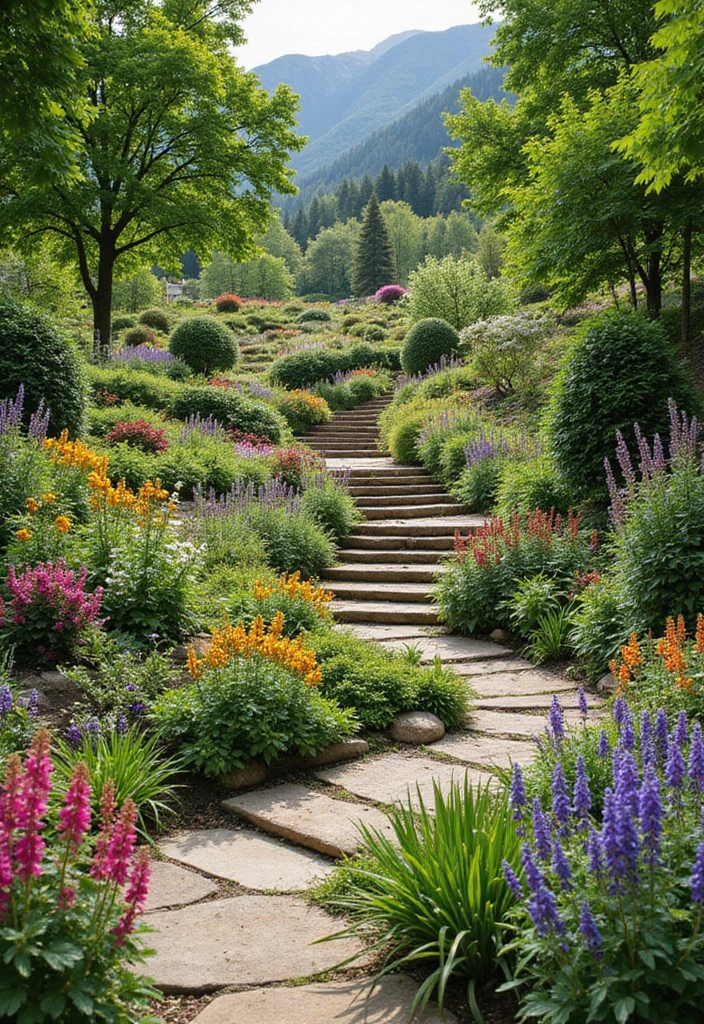
Terraced gardens are a fantastic way to create a multi-level garden space in a small area.
By building terraces, you can grow a variety of plants while adding depth to your landscape.
These gardens can be constructed using wood, stone, or even recycled materials.
Tips:
– Plan your terrace layout to ensure proper drainage.
– Choose plants suited for the elevation and sunlight of each terrace.
– Incorporate pathways for easy access and maintenance.
Issues to Consider:
– Ensure structural integrity to support the weight of soil and plants.
– Monitor erosion, especially after heavy rains.
Unique Insights:
– Use terraced gardens to create a unique edible landscape, mixing vegetables and flowers.
– Incorporate seating areas for a relaxing garden retreat.
Conclusion
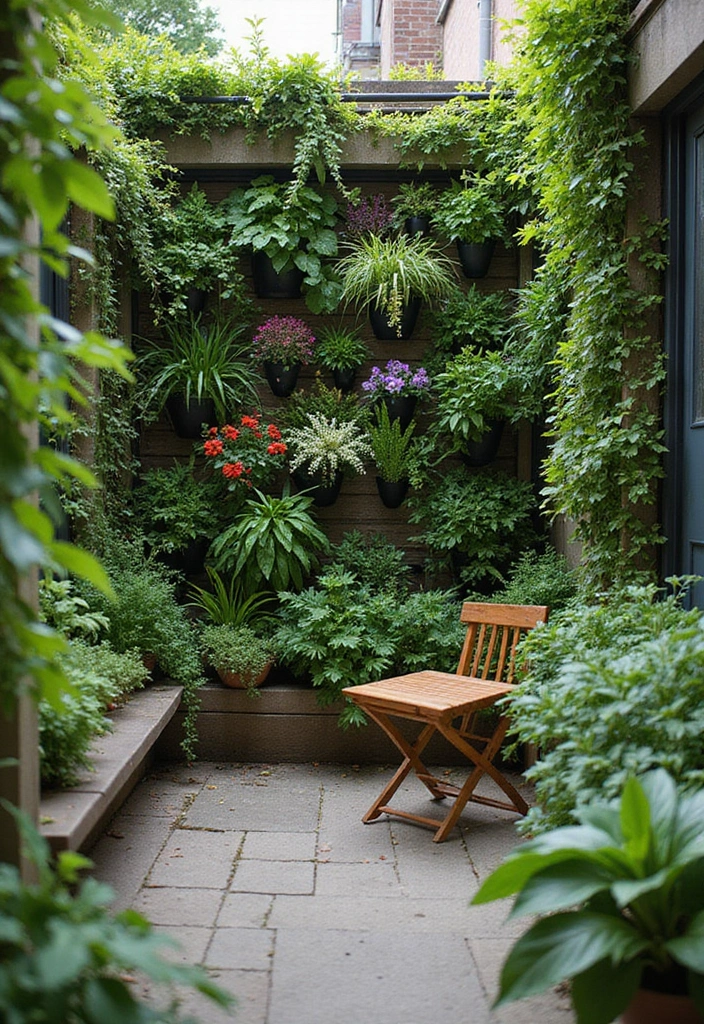
Vertical gardening opens up a world of possibilities, even in the smallest of spaces.
By incorporating these creative ideas, you can enjoy a beautiful and functional garden that enhances your outdoor decor.
Whether you opt for wall planters, hanging gardens, or recycled containers, every choice adds charm to your home.
Let your imagination run wild and create your own green paradise today!

